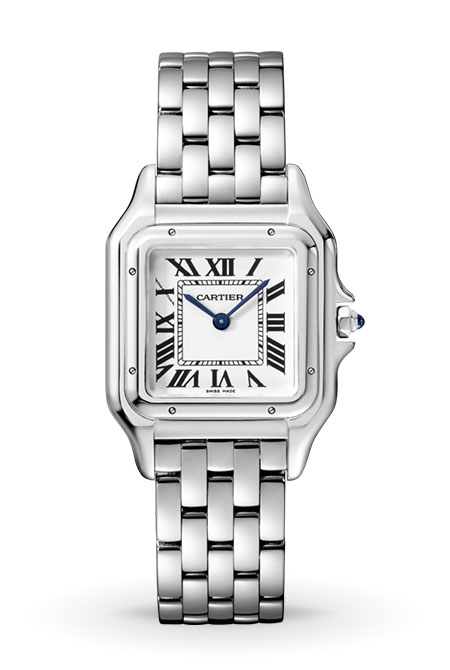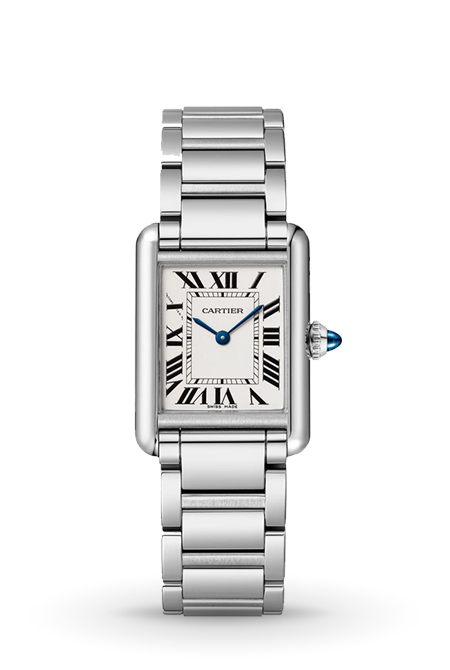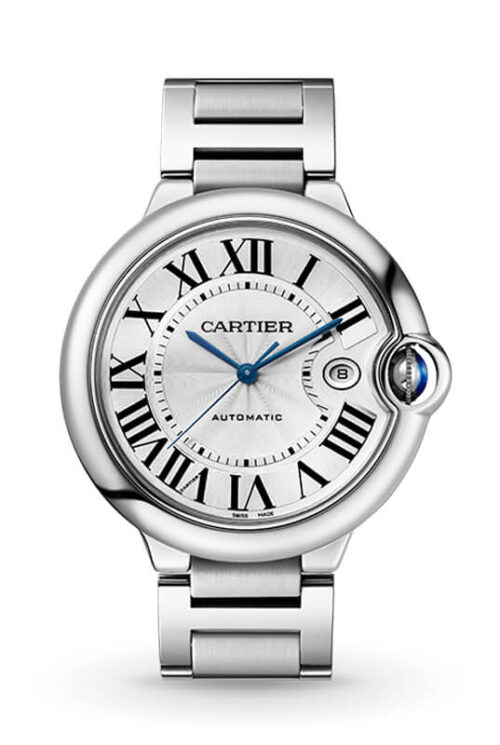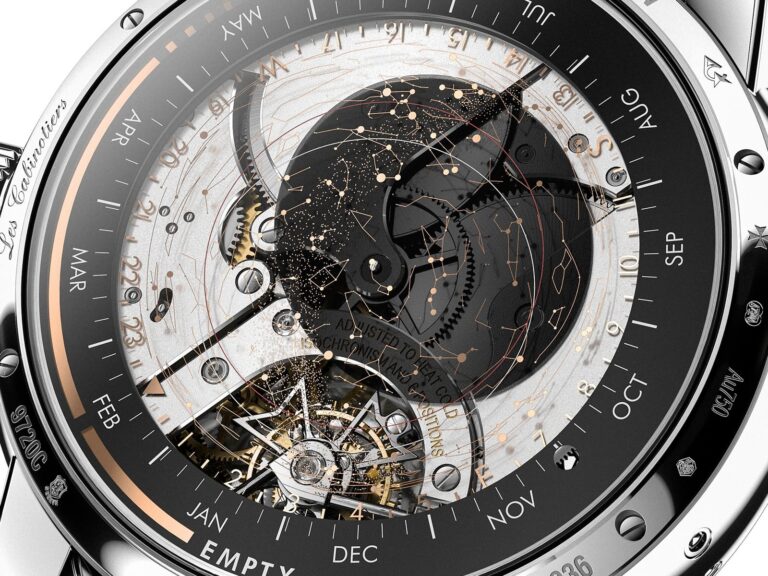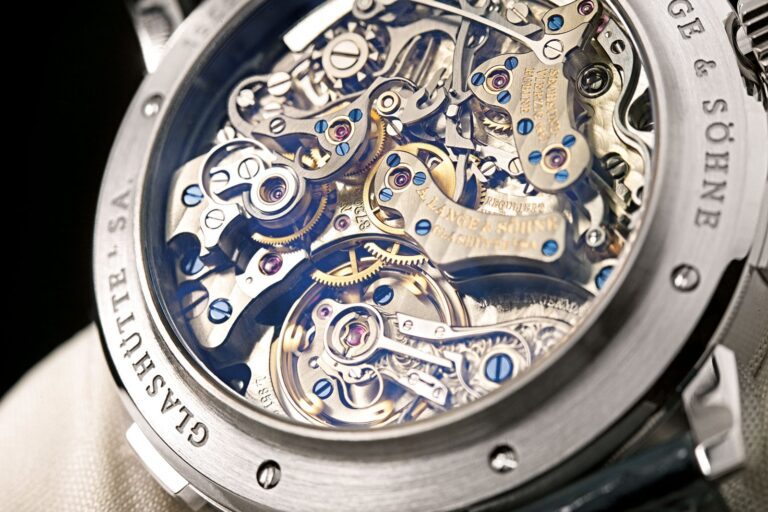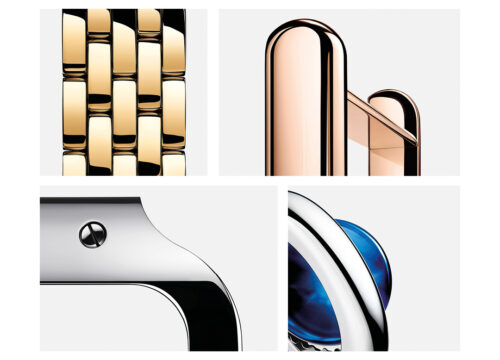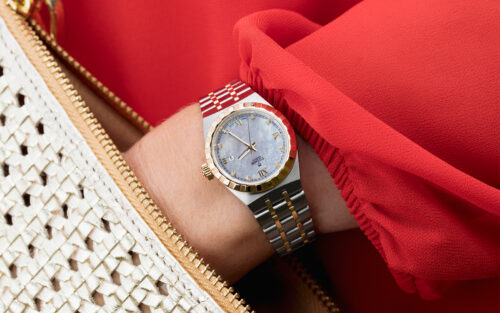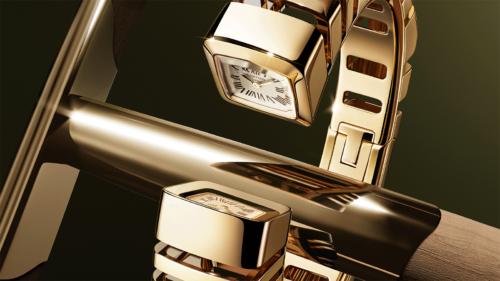Four Iconic Cartier Designs That Changed Watchmaking
For more than a century, Maison Cartier has surprised and delighted with its beautifully-shaped timepieces.
For more than a century, Maison Cartier has surprised and delighted watch aficionados everywhere with its beautifully-shaped timepieces. From the curvaceous Ballon Bleu, to the elegant Panthère, the iconic Tank, and, of course, the pioneering Santos, the brand has never been satisfied with keeping the status quo. And while each design is different from the next, they all benefit from Cartier’s guiding ethos, known within the Maison as “The Culture of Design”. Established by the brand’s mastermind, Louis Cartier, in the early 20th-Century, it comprises four key principles: shape, line, details and proportions.
An iconoclast in every sense of the word, Louis Cartier had a vision for applying high jewellery techniques – for which Cartier was already held in high esteem – to the fine art of watchmaking. Ergonomics as well as aesthetics come into play, with the ultimate goal being to create something that naturally melds to the wearer’s person, while visually defying the need for improvement. Here we look at four famous examples of “The Culture of Design” brought to life.
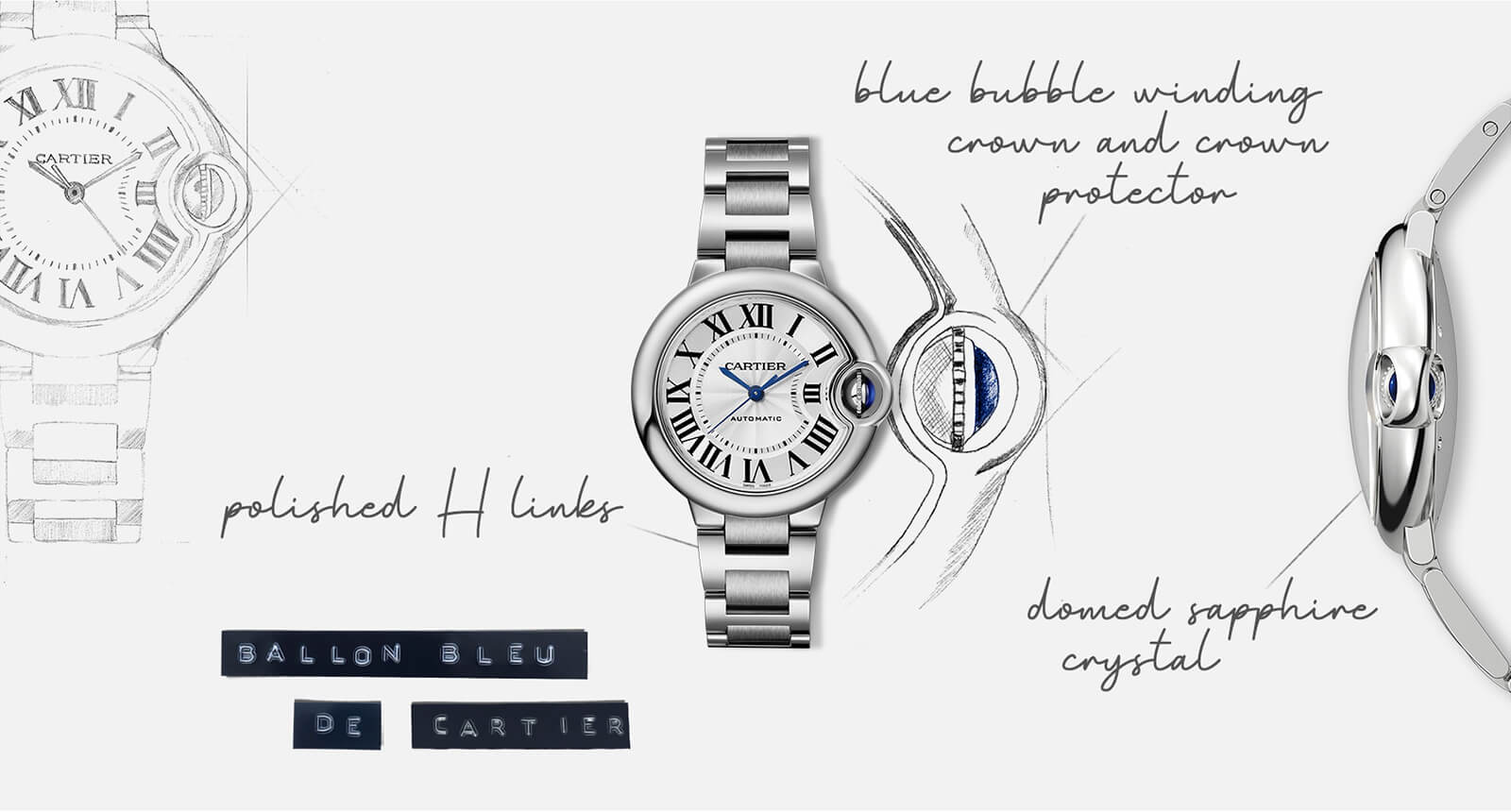
Perfect Proportions – The balloon with a blue bubble
You might think that size matters the most when designing the perfect timepiece but in fact the key to success is found in the proportions. The watch not only needs to look and feel good, it also needs to wear the “right” way, no matter whose wrist it is on. This quest for ultimate wearability has in many ways driven the pursuit of perfection for Cartier. Seeking out what is ideal for both watch and wrist. Doubly convex, the Ballon Bleu strikes the perfect proportions for wearability and looks. The curvature of the balloon watch gently nestles into your wrist while also having a pleasing surface. By giving volume to the circle, the Ballon Bleu offers a new way to experience the traditional round watch.

The Ballon Bleu’s proportions are often credited for its tremendous success since debuting in 2007. The design extends to the matching bracelet that features Cartier’s ‘H-links’. Each individual link is subtly shaped to help the whole optimally hug your wrist. These curves echo the domed crystal and case back profiles, enhancing the aesthetic appeal of the piece. The winning look is sealed by the domed winding crown. The juxtaposition to the case a playful yet calculated act of asymmetry, one that also serves a functional purpose in terms of crown protection. Finally, the proportions of the dial architecture accommodate the Ballon Bleu’s subtle nuances, whilst retaining the Cartier flair that is both classic and legible.
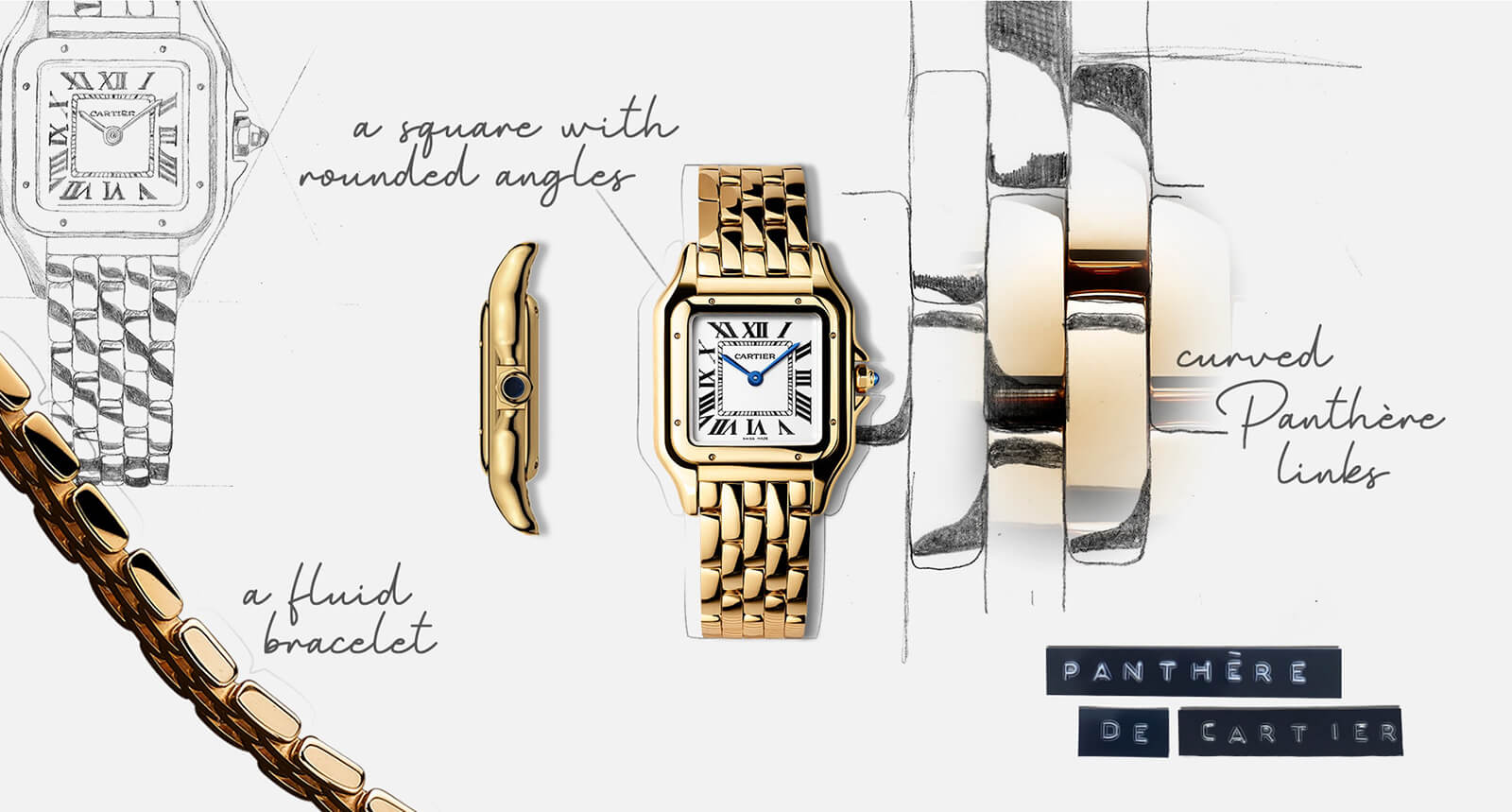
Precious Details – The fluid movement of the big cat
Given the nature of the medium, fine details are synonymous with luxury watches. But when it comes to Cartier, they are executed with the stylistic intuition of a jeweller. The Culture of Design excels at drawing out and accentuating the beauty to be found in the form. It’s daring to leave screws visible, rounding the corners of a square, or curving the links of a bracelet. When the Panthère launched in 1983, its playful bracelet captured the fun of the times. Replicating the fluid movement of the Maison’s emblematic big cat, each individual link merges to form an ultra-flexible structure.
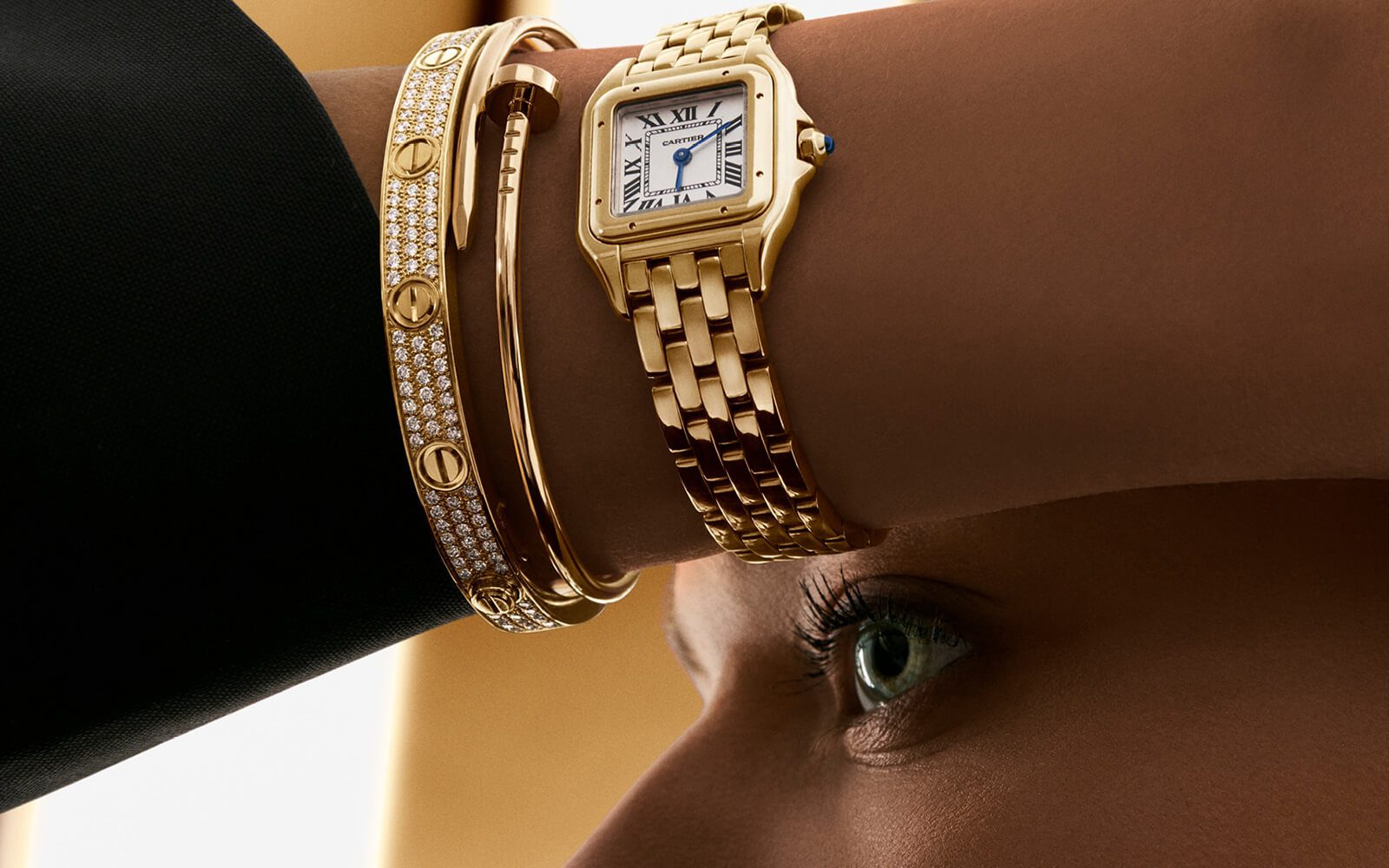
Supple yet strong, this model impresses with its emulation of the feline form. The level of detail given to the Pathère’s bracelet introduced the concept of a jewellery watch. Precious without the embellishment of precious stones. (Although such variations also exist.) Needless to say, the Panthère gave birth to a new genre, of which it remains the quintessential classic. This best-selling watch demonstrated the power of precious details, finding special appreciation among the art scene. Like the Ballon Bleu, the Panthère achieves a perfect marriage between watch and wrist. And this theme continues in our next example.
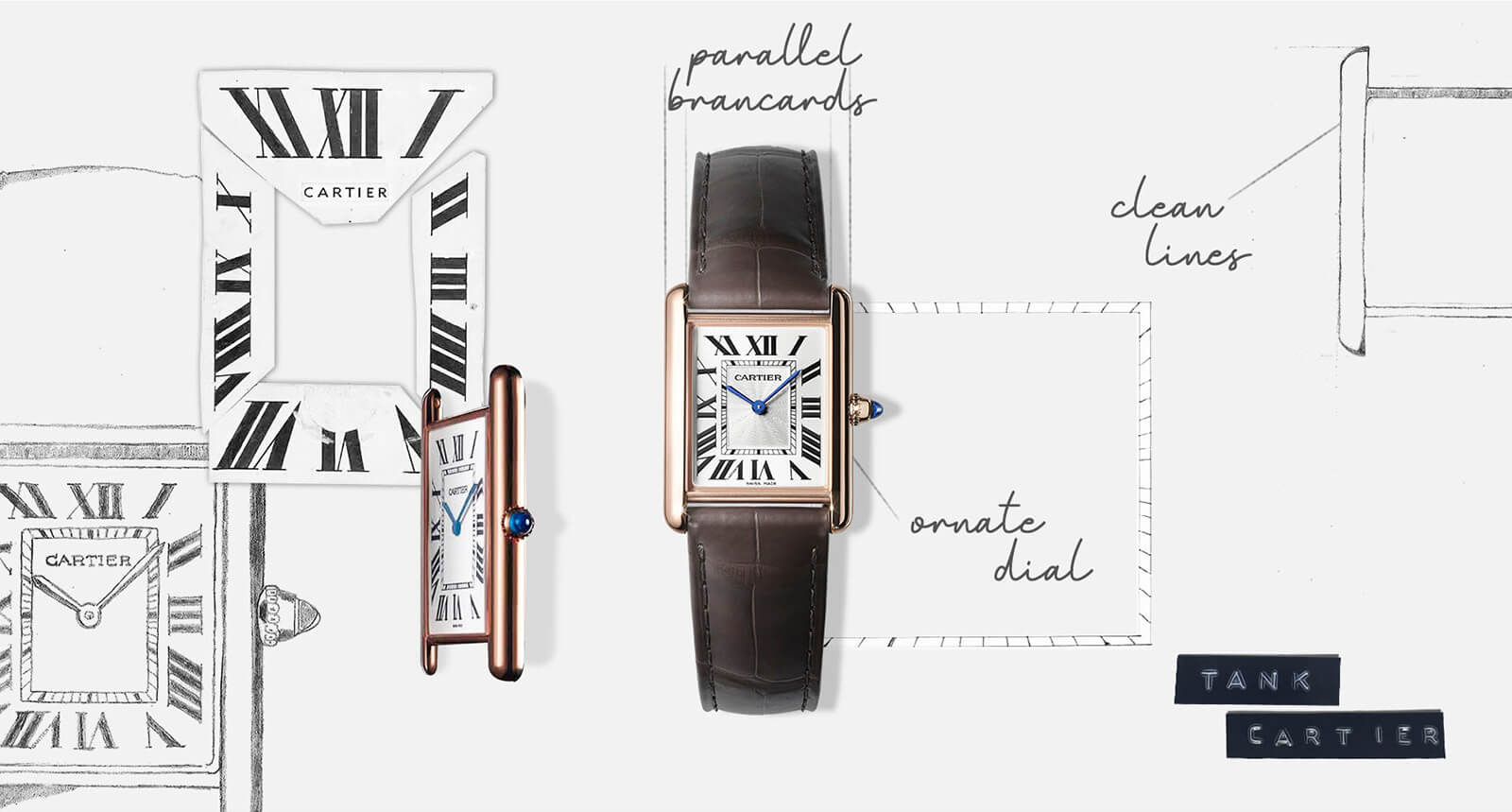
Pure Lines – The simplicity of parallel brancards
It can be argued that Louis Cartier’s quest for the perfect marriage resulted in the Tank. The inspiration came from seeing aerial photos of WWI tanks in the press. Driven by an obsession for pared-down simplicity, the challenge had always been how to reduce the number of components without compromising structural integrity. Looking at those grainy photos he recognised the solution immediately. By using parallel brancards to mimic combat vehicle treads, and the case as the turret, there was no need for a bezel or horns to attach the strap. Instead there was a flowing, uninterrupted rhythm between watch and strap.
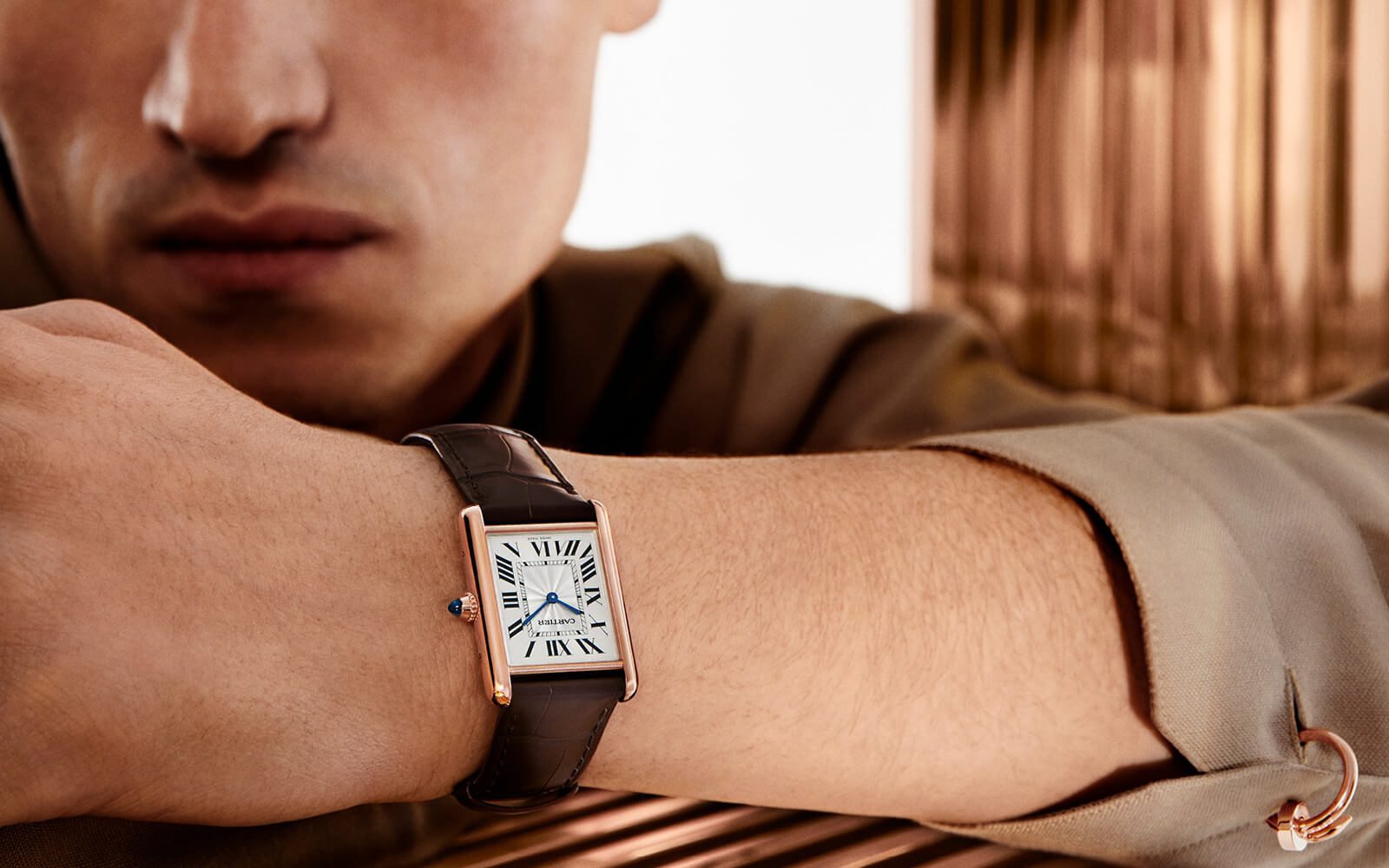
The clean lines of the Tank constitute one of the purest forms a watch can take. And yet its simple design paired with ornate dial have rendered it one of the most recognisable watches anywhere on the planet. A favourite among men and women alike, it has adorned the wrists of politicians, royalty and celebrities, not to mention many a passionate enthusiast. Introduced in 1918, the Tank went into full production in 1919, with Cartier producing variations ever since. Popular models include the Tank Must, Tank Louis Cartier, Tank Française and Tank Américaine. Each with their own character but recalling the pure lines that define the legend.
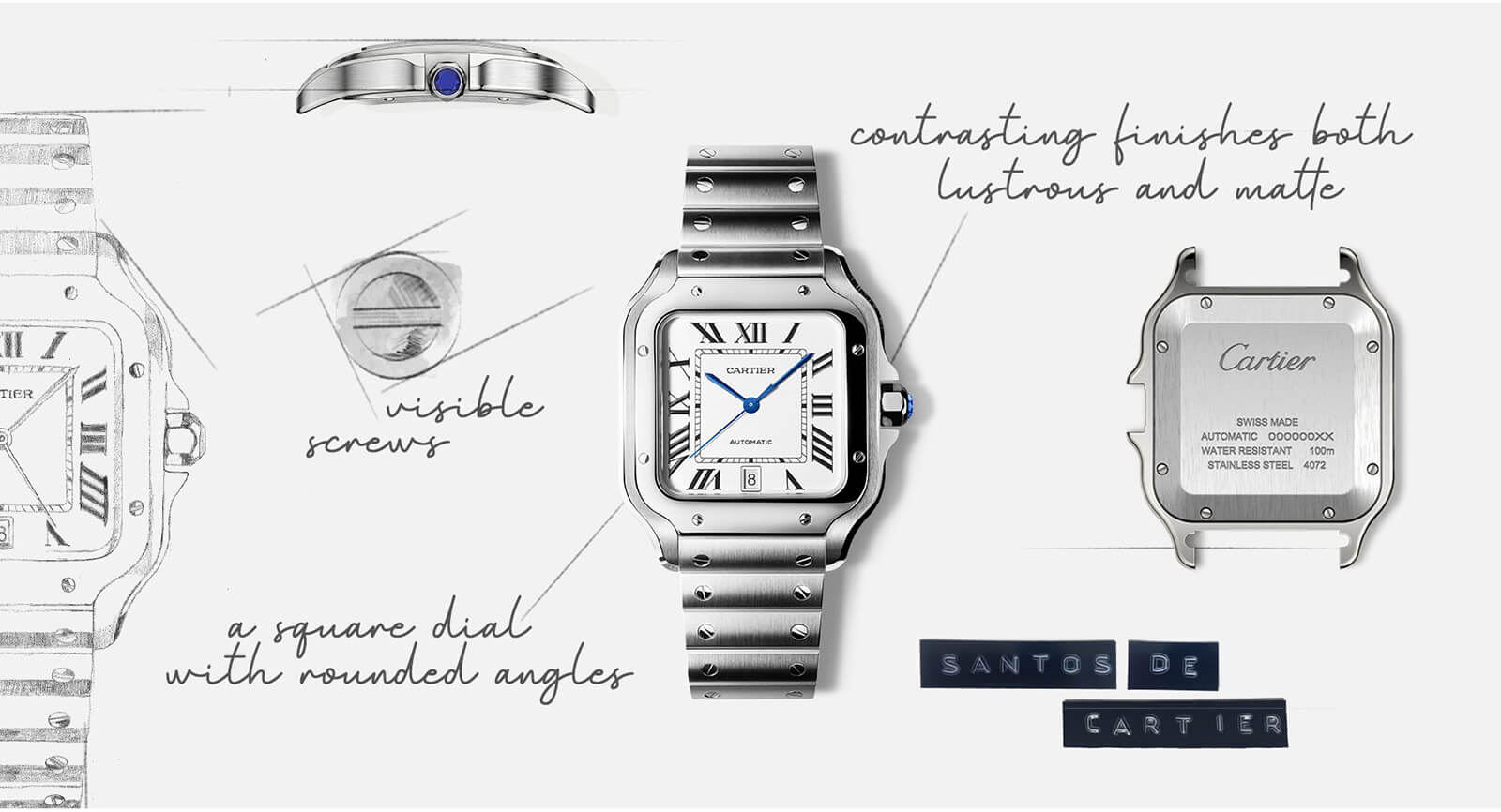
Precise Shapes – The square dial with rounded angles
Finally, we reach the starting point – of the Cartier watch story and the design process itself. Shape. Above all, shape is what sets Cartier watches apart. This stems right back to the pocket watches Louis Cartier developed when he first joined the family business. Unperturbed by norms, he explored the possibilities of shapes to produce some truly unique and elegant objects. The Santos – originally a prototype produced for Brazilian aviation pioneer Alberto Santos-Dumont, in 1904 – was derived from one of these non-circular creations. A square model with rounded angles. The shape naturally lent itself to integrating bracelet attachment horns, while its flat design made it suitable for wearing on the wrist.
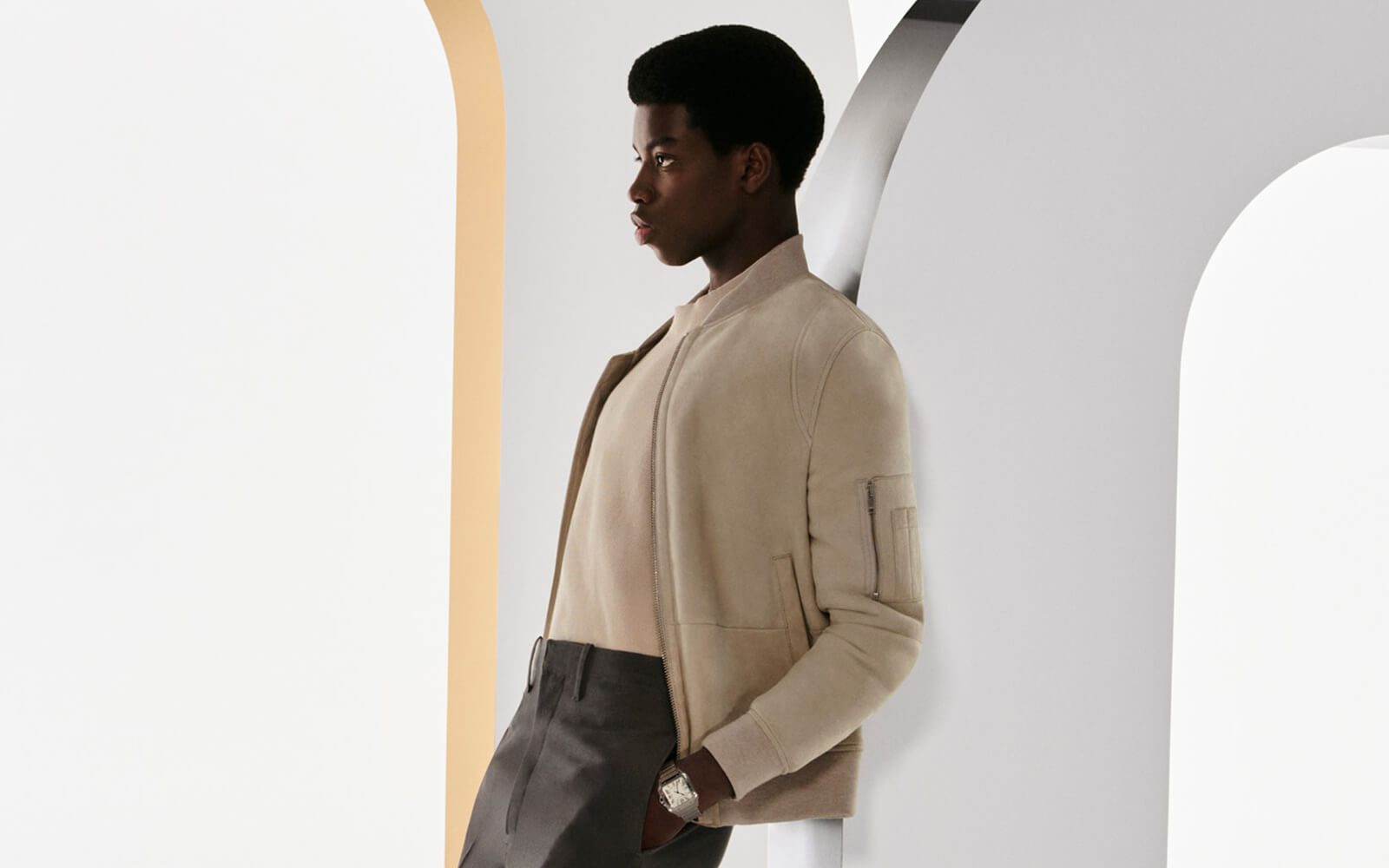
Since first being offered to the public in 1911, the square dial with rounded angles remains unmistakable to this day. Now very much a unisex option – like many of Cartier’s timepieces – its success solidified a formula for watchmaking that has propelled the Maison to the privilege position it enjoys today: start with the shape. From the humble square, Louis Cartier derived several features that went on to become the DNA of Cartier’s signature timepieces. Leaving the screws visible for instance, which in time extended to the bracelet. Contrasting finishes, between bezel and case. And perhaps most importantly, the enduring mystique of the Cartier dial. The Santos’ takes the credit for popularising the modern wristwatch over a century ago. Its precise shape has carried it through all that followed, such that today, it can truly be called an icon.
To explore the full selection of Cartier timepieces available from Watches of Switzerland, please click here. Alternatively, book a private appointment at your closest Watches of Switzerland boutique today and allow a member of our friendly, expert staff take you through the latest models.








 Rolex
Rolex A. Lange & Söhne
A. Lange & Söhne Blancpain
Blancpain Breguet
Breguet Breitling
Breitling Cartier
Cartier Hublot
Hublot Vacheron Constantin
Vacheron Constantin IWC Schaffhausen
IWC Schaffhausen Jaeger-LeCoultre
Jaeger-LeCoultre OMEGA
OMEGA Panerai
Panerai Roger Dubuis
Roger Dubuis TAG Heuer
TAG Heuer Tudor
Tudor FOPE
FOPE Agresti
Agresti L’Épée 1839
L’Épée 1839




